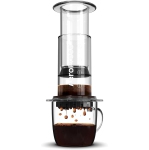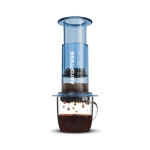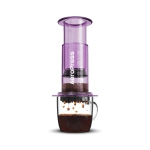FAQ About French Presses and Percolators
There are few greater pleasures in life than finely brewed coffee in the morning. Not to mention in the afternoon, and at night. Ok let's face it: good coffee is welcome any time of day. But unless you plan on giving big coffee chains half your paycheque, you're going to need a home brewing coffee maker. French press and percolators are the most popular coffee brewers in the world and a welcome addition to any kitchen.
What's the difference between a French press and the coffee percolator?
A percolator is considered the “old school” way of making coffee, around since circa 1889. However, the French press was invented even earlier, used since the 1850s, making it one of the original ways to make coffee, too.
How does a French press work? A French press consists of a pot and filter that requires manual brewing using a plunger and lid. Add the coffee and fill it with hot water, let it brew for 4-5 minutes (or longer), then press down with your hand to brew slowly. This helps extract all the delicious flavours. It also allows greater control over brew strength since you can adjust variables and get the coffee exactly the way you like it. The French press takes time to brew since you have to let the water pass through the beans. French press coffee is also poured at a more regulated temperature.
A percolator, by contrast, uses an easy plug-in and pour process. It heats the water before brewing using a built-in heating element or external heat source, then continuously cycles the water through coffee grounds to brew a strong cup. This means the resulting coffee is going to be hotter coming out of the percolator, but that's not always necessary for everyone.
The key difference is that with a French press, the manual operation allows you to adjust the brew strength, and even coffee temperature, to your liking. It can take longer when you factor in brew strength and boiling water first. But a percolator takes anywhere from 7-10 minutes to finish brewing as well. And with a percolator, you’ll get a piping hot, strong cup of coffee every time. Both will yield a flavourful brew.
Tips for choosing the right French press or percolator for your needs
Choosing a French press is easy, and you'll find a massive amount of selection available among the best French press machines. You're probably going to choose between glass and plastic, and the choice might be based on how clumsy you are in the morning before that first cup of java. Make sure you get the right press for whether you are a coffee or tea drinker. Check to see if the tea press is built for loose tea or tea bag steeping or both.
Percolators come in three versions – stovetop, microwave, and electric. The electric percolator is by far the most popular for its convenient plug-in and pour system. These percolators do not require monitoring and will notify you when coffee is ready to go. Stovetop espresso makers are placed over a cooktop burner and can deliver a great tasting hot beverage. However, you have to keep an eye on them not to boil over. Same with microwave percolators, which are the most energy efficient of the three.
Make sure to choose the right size as well. If it’s just for you, a small French press or percolator might suffice. If you want to brew for bigger groups, get something a little larger. If you have a gas stovetop at home, verify that the percolator can be used on the burner if you opt for a stovetop one.





